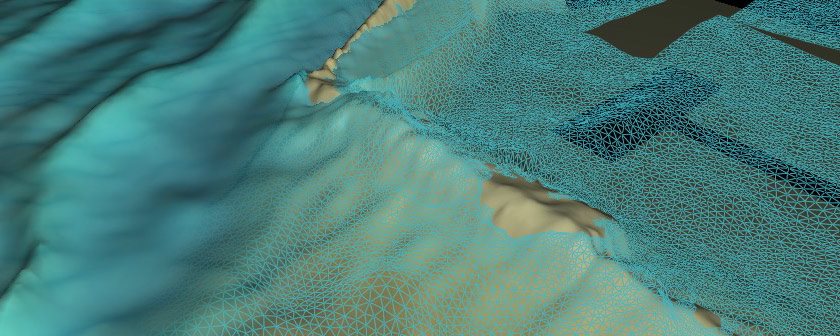Operational safety is at stake when wave movement is high in ports and terminals. As such, port authorities and key stakeholders are concerned with wave conditions affecting vessel motions to avoid costly consequences. In addition, high vessel motions may damage mooring lines, fenders, or even the moored vessels in the port. What if there was a faster, better and easier way to model waves in ports as compared to existing methods?
Predicting vessel movements – the limitations of traditional numerical modelling
The design of port approach channels, port layout and presence of protecting structures such as breakwaters and seawalls all play a part in altering the wave energy entering the port.
To determine wave behaviour such as wave height and wave periods, consultancy companies and engineers often make use of numerical modelling as opposed to costly physical experiments.
However, when using traditional numerical modelling methods, modellers are often faced with constraints such as:
- Modelling in 2D
- Depth restriction
- Wave height and wave period restriction
- Having to work on structured grid
- Limited wave kinematics
- Weakly non-linearity
- Weak performance on high performance computers
Applying an advanced deterministic phase-resolving model could help in getting around these common limitations.
The possibilities with an advanced phase-resolving model
Phase-resolving models simulate the individual surface waves at a deterministic level which requires a much finer resolution in space (i.e. metres) and time (i.e. seconds) than phase-averaged models (kilometres and hours). But it also gives a much more detailed description of the waves in a specific seastate allowing you to get detailed insights on an individual wave basis.
If you’re a wave modeller, you could be interested in the ability to:
- Get a full 3D description of your waves and resolve features like breakwaters in 3D
- Model wave transformation from offshore to nearshore
- Cover fully nonlinear, fully dispersive surface gravity waves and ambient flow
- Handle wave breaking, wave run-up and overtopping
- Model flow through porous structures e.g. determine wave transmission through porous breakwaters
- Use high performance computing with the possibility of Cloud execution for your models
- Reduce the uncertainty of wave impact calculations
- Get results much faster than when using computational fluid dynamics (CFD) models
In an area where wave breaking occurs, a high spatial resolution is needed. Flexible computational meshes, or unstructured grids, provide the basis for detailed multi-disciplinary models.
Can such applications benefit your projects?
Find out about MIKE 3 Wave FM, an advanced phase-resolving model that has been validated extensively and used in complex projects and R&D activities worldwide.








